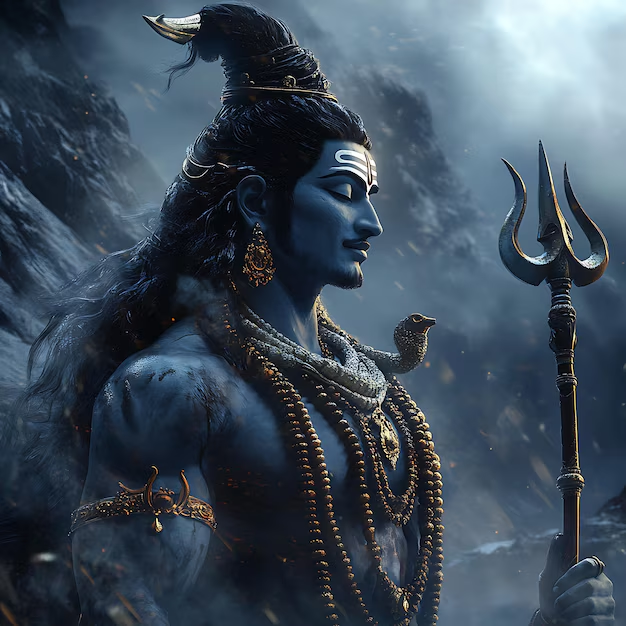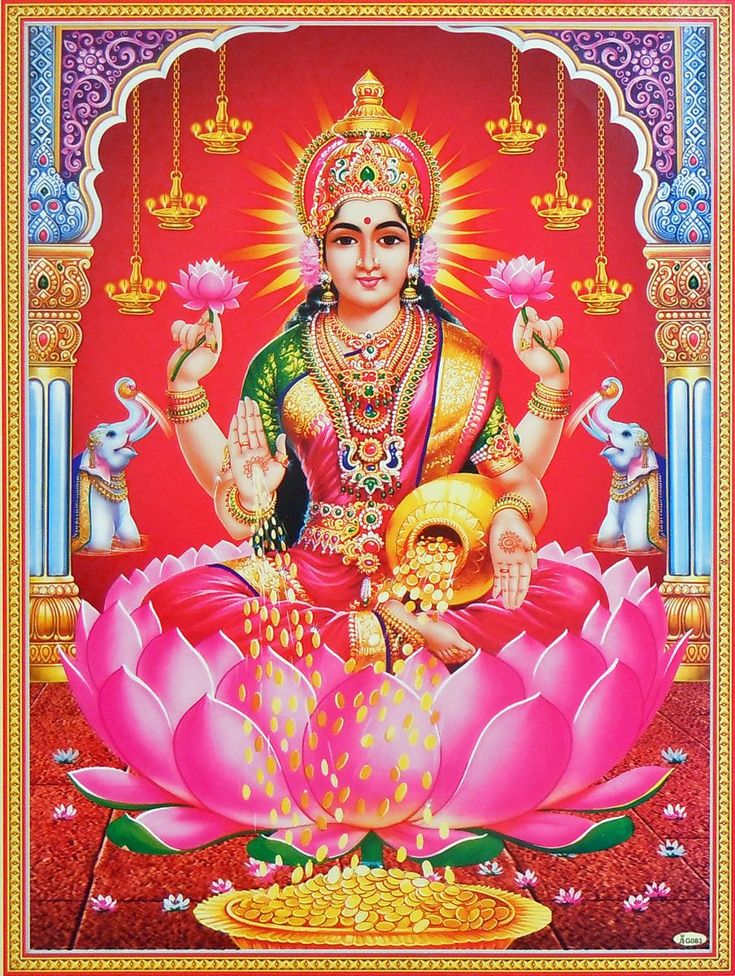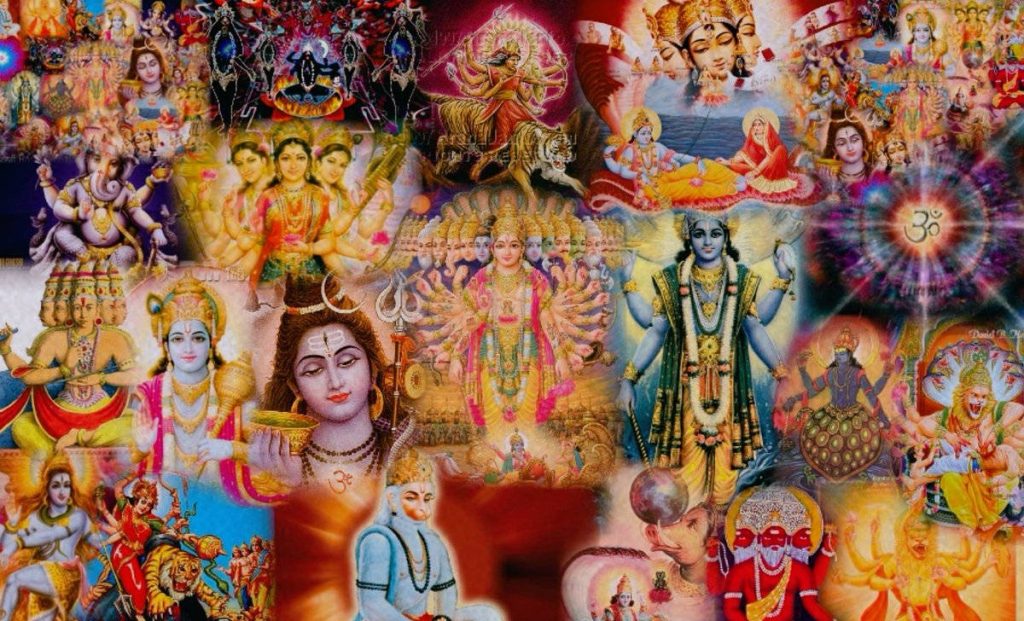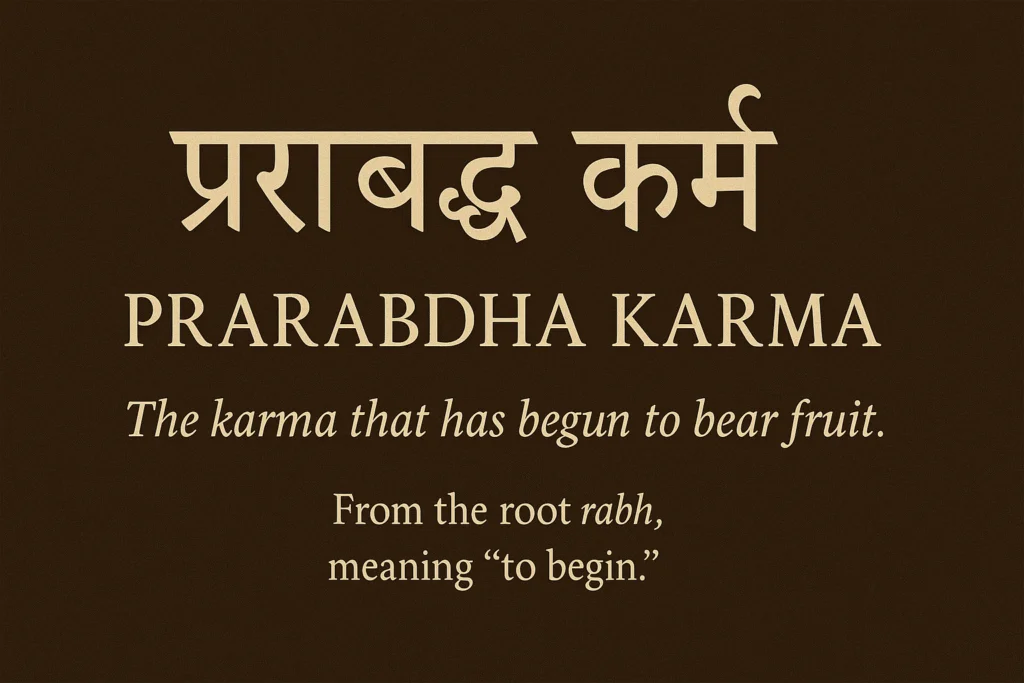Hinduism doesn’t have a single primary god or a single main holy book. Similarly, we do not have a single holy symbol in Hinduism as well. So, what is the main symbol of Hinduism? You may wonder. In Hinduism, we have multiple sacred symbols representing rich religious and spiritual meaning such as the Om (ॐ), Swastika (卐), Trishul (Trident), Lotus, Kalasha, and more.
But, as we do not have a single definite symbol; I am somewhat inaccurate if I say Om (ॐ) is the main symbol, however, Om (ॐ) is the most widely recognized holy symbol of Hinduism and is also believed as the most powerful symbol of Hinduism by many.
Let’s cover these four Hinduism symbols in depth: Om, Swastika, Trishul, and Lotus.
Om Symbol Meaning
Om, or Aum (ॐ) is the most sacred sound and symbol in Hinduism. That is because the Om represents the ultimate reality of the universe (known as Brahman).
The Story of Om in Hinduism
Before the universe existed, there was only an eternal, unmanifested state. When creation began, the first vibration emerged as the sound Om, bringing everything into existence. Hence, the Om is also known as the Pranava mantra and is seen as the frequency of creation.
As per the Mandukya Upanishad (The shortest Upanishad which explains the nature of Om), the Om consists of three syllables:
- A (अ) – The waking state (Jagrat)
- Jagrat is our normal, conscious state where we interact with the world. It represents the physical reality and material existence.
- U (उ) – The dream state (Swapna)
- Swapna is the state of dreams, imagination, and mental activity. It represents subtle reality and thoughts.
- M (म) – The deep sleep state (Sushupti)
- Sushupti is the state of complete rest–no dreams, no awareness. It represents pure potential and unmanifested reality.
- The Silence after the Om represents the ultimate, transcendental state known as Turiya.
Okay, now you might be wondering, what do all these mean? What are they trying to tell? Don’t worry my friend, I got you covered. So, what it is essentially trying to say is that the Om teaches us that beyond the physical and mental experiences that we experience as a human, there is a higher, unchanging consciousness, the Turiya, which is the essence of all existence. And, chanting Om helps us to increase awareness of that ultimate reality, additionally, with deep practice, it can also lead us to experience the reality by transcending the walking, dreaming, and deep sleep states. I hope I made it a bit simple.
Om is also widely used in prayers, meditation, and rituals in Hinduism. In fact, in the vast majority of mantras in Hinduism, Om is the first word that is used such as:
- Om Namo Narayanaya
- Om Namo Shivaya
Why is Om the first word of mantras?
The Om is the sound of creation and represents the Brahman, the ultimate reality, hence, it connects the mantras to the divine energy. Hence, to invite the divine presence, Om is the first word in the mantras. It enhances the mantra’s spiritual impact since mantras with Om resonate at a deeper spiritual frequency.
Additionally, chanting Om itself before a mantra itself clears distractions and focuses the find. Hence, many people also do Om meditation for this purpose.
Swastika: The Auspicious Symbol of Hinduism

Swastika (卐) is a very auspicious symbol in Hinduism representing prosperity, good fortune, and dharma (cosmic order, in this case).
The swastika is derived from Sanskrit (Su meaning good, auspicious) + (Asti meaning be, exist), signifying “Let there be well-being”, and “May good prevail”. What this essentially expresses is a positive intention to achieve well-being.
If that doesn’t help, let me try to make it simpler. We often say that “May you be happy and prosperous” to people as a blessing right, yes Swastika represents this idea visually. We wish for auspiciousness to attract and manifest positivity, peace, and prosperity.
The Swastika (卐), as you can see has four arms. The four arms of Swastika represent such a profound meaning and depth:
- the four Vedas (Rig, Yajur, Sama, Atharva)
- four Yugas (four ages: Satya, treat, Dvapara, Kali representing time and cosmic cycles)
- Four Directions – North, South, East, West (representing universal presence)
- four Purusharthas (four goals of life: Dharma, Artha, Kama, Moksha)
You might have often seen Swastika at the entrances of temples and homes. Let’s understand why.
The swastika is drawn at the entrances of temples and homes to bring positive energy, it is used on wedding invitations, and festival decorations to invoke divine blessings, it is drawn on Kalash, and rangolis for auspiciousness, it is also found in spiritual diagrams (yantras). In spiritual diagrams, it is used to invoke protection from negative energies, attracting prosperity and auspiciousness, and balancing cosmic energies.
Hence, the Swastika is also a very deeply spiritually rich symbol of Hinduism.
Trishul: The Power of Lord Shiva

The Trishul known as trident in English, is Lord Shiva’s iconic weapon, symbolizing divine power, destruction of evil, and balance.
The Trishul has a deep symbolic meaning as it represents the three qualities (Gunas) of nature (Prakriti) sattva, rajas, and tamas) and the control of ego. These are:
- Sattva: Purity, Knowledge, Harmony, Wisdom, Truth, Goodness
- Rajas: Energy, Passion, Action, Desire, Movement
- Tamas: Inertia, Ignorance, Darkness, Confusion, Negativity
The 🔱 has three prongs, these three prongs represent the three qualities of nature: sattva, rajas, and tamas. It representing the three qualities of nature signifies Lord Shiva’s control over the universe and his power to transcend these three states.
The trident is widely used in Shiva temples and is also placed on the top area of the temple structure, and the reason is divine protection. The Trishul wards off negative forces and evil energies from the temple representing spiritual power, Shiva’s dominance over the universe, and three gunas (Sattva, Rajas, Tamas). It is also placed at the highest point to remind devotees to rise above the material attachments and ego.
Alright, we have covered Om, Swastik, and Trishul so far, hence, let’s move on to the last symbol that we will be covering in this blog — the symbol of purity — the lotus.
Lotus: The Flower of Purity and Enlightenment

The Lotus (Padma) is another powerful symbol of Hinduism that represents purity, divine beauty, and spiritual awakening.
Symbolic Meaning of Lotus
Do you know that lotus grows in muddy waters yet when grown it remains pure and unstained? Yes, and in Hinduism, it has a very deep meaning. Lotus growing in mud yet remaining pure when grown symbolizes detachment and enlightenment—the ability to live in the world yet remain spiritually pure.
It leaves us with a very beautiful divine knowledge that just as how the lotus remains untouched by the dirt around it, a spiritual seeker should rise above worldly attachments while living in the material world.
Lotus, such purity, is associated with Lord Vishnu (preserver of the creation), Lord Brahma (the creator), and Goddess Lakshmi (goddess of wealth). We can see them sitting on a lotus.
FAQs About Hindu Symbols
Q: What is the most powerful Hindu symbol?
A: Om (ॐ) is considered the most powerful symbol of Hinduism, as it represents the cosmic vibration of the universe. Everything in this universe, the energy, consciousness, and matter emerges from Om. The Om aligns the mind with universal consciousness and chanting Om enhances brain function, reduces stress, deepens meditation, and gives inner peace.
Q: What are the most significant symbols in Hinduism?
A: Om, Swastika, Trishul, Lotus, and Kalasha are among the widely recognized symbol of Hinduism.
Q: Is Swastika a Hindu symbol?
A: Yes, unlike the Western misconception of the Swastika due to some history, the Swastika is a deeply spiritual ancient auspicious Hindu symbol representing prosperity and dharma. Hinduism’s symbols hold deep spiritual meanings and are integral to rituals, temples, and daily life.
Whether it’s Om, the Swastika, the Trishul, or the Lotus, each symbolizes divine energy, balance, and enlightenment. Somewhere in the future, I will be covering each and every symbol in depth independently including the ones that are not mentioned in the blog.
If you found this blog insightful, dive deeper into Hinduism’s timeless wisdom by exploring more articles on our website!
Read Next:
What is Sanatana Dharma?
Hinduism, the religion of over 1 billion population is the oldest religion, and calling Hinduism…
Prarabdha Karma: The Mystery Behind Your Life
Have you ever wondered why you were born into the family you were born into,…
7 Core Beliefs of Hinduism
Hinduism, the world’s oldest and the most diverse living religion doesn’t revolve around a single…
Everything you need to know about Ashlesha Nakshatra
Ashlesha Nakshatra is the ninth Nakshatra out of 27 in Vedic astrology, falling within Cancer…
27 Nakshatras in Vedic Astrology: A Complete Guide
In Vedic astrology (known as Jyotisha), the sky is divided into 27 Nakshatras or lunar…
The 3rd House in Astrology: The House of Communication, Siblings, Courage & Short Travels
Note: All twelve houses’ blogs feature a similar pattern for ease of understanding, hence, certain…







Leave a Reply